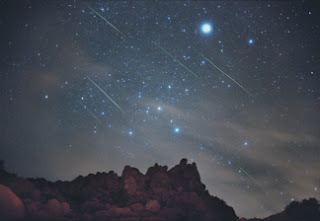Viewed from the road, this desert park only hints at its
vitality. Closer examination reveals a fascinating variety of plants and
animals that make their home in this land shaped by strong winds, unpredictable
torrents of rain, and climatic extremes. Dark night skies, a rich cultural
history, and surreal geologic features add to the attraction of this place.
Joshua Tree National Park Map
Geography
Joshua Tree is a transition zone. Deserts don’t have firm
boundaries and, much of the park lies in the overlap between the Colorado and
Mojave deserts. This transition has a wealth of biological diversity and is
home to species characteristic of each desert ecosystem.
Colorado Desert
The eastern half of the park, below 3,000 feet above sea
level, lies within the Colorado Desert. It features the habitats of Creosote
bush scrub; Ocotillo, desert Saltbush and mixed scrub including Yucca and Cholla
cactus. There are areas of such cactus density they appear as natural gardens.
The lower Coachella Valley is on the southeastern side of the Park with sandy
soil grasslands and desert dunes. Many small mammals, birds and reptiles live
here and are well adapted to the harsh environment.
Cholla Cactus Grove in Colorado Desert part of the park
Mojave Desert
The western half of the park, at elevations above 3,000 feet,
is Mojave Desert habitat. It is considered higher, drier, and slightly cooler
compared to the western half of the park and is known for the Joshua tree for
which the park is named. The dominant geologic features of this landscape are
hills of bare rock, usually broken up into loose boulders.
Mojave Desert part of the park
Safety
It is easy to become dehydrated in arid desert environments.
Even if you only plan to drive through the park, you should have some water
with you. If you are going to camp, we recommend one gallon of water per person
per day. If you are going to be hiking or biking, you will want to take along
two gallons per person. Drink the water and do not economize. When the water is
half gone, it is time to turn back. Joshua Tree is of course a desert and the
hot temperatures during the day can drop dangerously low during the night. Wear
the right clothing for the time of day you plan to visit the park and bring
layers is always recommended.
What to Do
Camping
Nine established campgrounds exist in the park, only two of
which (Black Rock Canyon and Cottonwood) provide water and flush toilets. A fee
is charged per night for each camping spot. Backcountry camping, for those who
wish to backpack, is permitted with a few regulations.
Hiking
There are several hiking trails within the park, many of
which can be accessed from a campground. Shorter trails, such as the one mile
hike through Hidden Valley, offer a chance to view the beauty of the park
without straying too far into the desert. A section of the California Riding
and Hiking Trail meanders for 35 miles through the western side of the park. The lookout point at Keys View, towards the south of the
park, offers views of the Coachella Valley and Salton Sea.
Nature walks inside the park include: Hidden Valley, Indian
Cove, and Cholla Cactus Garden.
Longer trails include: Lost Horse Mine, Lost Palms Oasis,
and Fortynine Palms Oasis.
Rock Climbing
The park is popular with rock climbers and was originally a
winter practice area while Yosemite Valley and other parts of the Sierra Nevada
were snowbound, but later became an area of interest in its own right. There
are thousands of named climbing routes, at all levels of difficulty. The routes
are typically short, the rocks being rarely more than 230 ft (70 m)
in height, but access is usually a short, easy walk through the desert, and it
is possible to do a number of interesting climbs in a single day.
Star Gazing
It is estimated that only around 10 percent of the
population of the United States is able to see the night sky in its natural,
unpolluted state. No wonder visitors to Joshua Tree National Park are awed and
astounded when they get their first glimpse of the night sky. It’s the perfect
place to get a nice, clear view of the Milky Way. Joshua Tree is especially
popular on nights when meteor showers are visible to the naked eye.






No comments:
Post a Comment